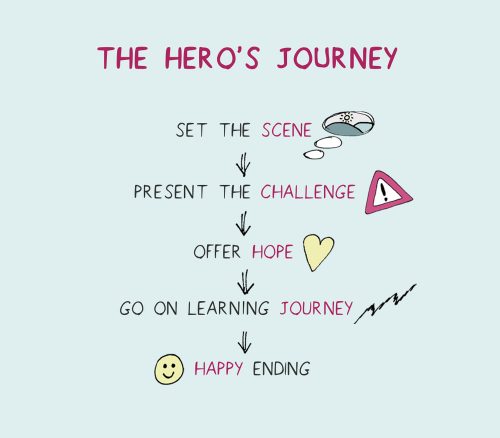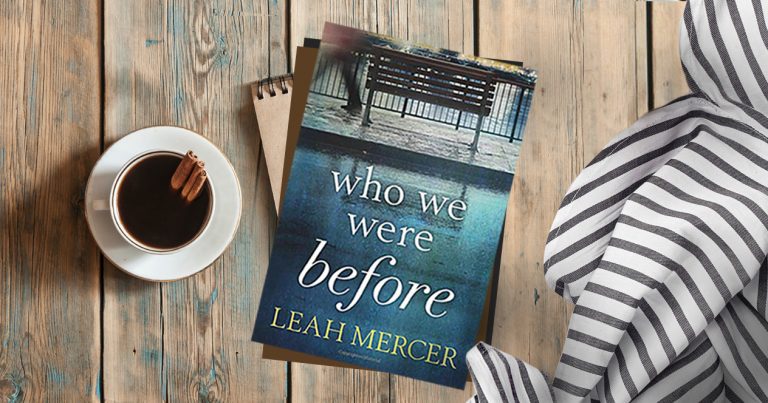Every good ad has a story to tell.
You’ve seen them. Watched them. Shared them. Remembered them.
And you do those things because of the emotions that ad made you feel — and you felt those emotions because somewhere in that ad existed a story that resonated with you.
The Peloton Ad Reaction
A new Peloton bike ad aired over the holidays, and many who watched it shared, mocked, commented on it or talked about it. People were mad. Arguments have ensued, and insults have been flung about like last year’s fruitcake. There are people who were genuinely pissed off that the TV husband bought the TV wife a bike for Christmas, that said TV wife is thin, and an entire host of other reasons — including that the ads in general show only fit, healthy people in really (really) nice homes.
I heard about the mocking of the ad before I ever saw the ad. So it made me wonder… why did this one short ad spark so much emotion? Some of the comments I read about included calling the husband (the giver of the Peloton bike gift) controlling, possibly even abusive, sexist and a host of other things. The woman who received the ad was in a terrible marriage. He was giving her body image issues. And more and more.
When the ad finally played on my TV, I expected nothing short of the ad version of Sleeping with the Enemy. Instead, I found myself wondering if there was a different ad. Had I missed it?
For those of you who haven’t seen it, here you go. It’s (ironically, I think) titled “The Gift that Gives Back”:
In the ad, I saw a man gift his wife a Peloton bike for Christmas. She spends the next year exercising and getting into the routines as part of the membership and recording her progress. In the end, she says how much it changed her.
I didn’t see the nefarious tones that others did. But I did realize something.
You Can’t Skip the Backstory
As I watched, I was filling in details that the commercial didn’t provide. I was creating the missing backstory that brought us to the opening Christmas morning scene in this mini-story. Because it was a story.
Peloton did have a story to tell; according to their remarks after the uproar, they called it a “fitness and wellness journey.” But in creating that story, that journey, they missed a key element piece: a backstory that helped the viewers understand the context of WHY.
Why was this journey positive? Why was the wife videoing the entire year? And mostly, WHY had the husband bought her the bike?
So instead of following their preferred narrative, viewers filled in those gaps on their own.
I did, too. As I watched, I filled in the gaps without thinking about it: Why the present? The wife had told the husband she wanted the Peloton bike and really wanted to engage in that community. Her husband got her something she wanted. I filled in what felt natural to me. My husband would get something like that only if I asked for it, because he respects me and because it would be a huge waste of $3000 to buy me something I wouldn’t use. And I had, in fact, been thinking about exercise bikes and classes, so there you go. I saw the bike and the videos in the ad and could imagine myself asking for it and my husband getting it.
Our brains are wired that way. A study done at Washington University in St Louis shows that when people hear a story, their brains react in similar ways as if they are carrying out those actions in real life. So it shouldn’t be surprising that people built a variety of scenarios around the original Peloton bike ad–likely how they might react and feel if their significant other gifted them an exercise bike with no context of why. And when you add in the human propensity for going to the worst possible conclusions, it also shouldn’t be surprising that many of those scenarios were not positive ones.
The “Journey” Went Awry
When brands use stories in their marketing, they have a very short time in which to do a few things: help you connect to the characters and help you understand the situation. What you are seeing. These cues help you know what you, as the viewer, should feel.
Many people did, in fact, connect to the woman in the commercial, but not the way Peloton intended. As referenced by their response:
“While we’re disappointed in how some have misinterpreted this commercial, we are encouraged by–and grateful for–the outpouring of support we’ve received from those who understand what we were trying to communicate.”
Misinterpreted.
Peloton’s response put the blame on the viewer. You saw it wrong. You didn’t see what we wanted you to see. We didn’t mean it that way.
But did people misinterpret what they saw?
Or did they just fill in the missing gaps of an unfinished story? If a storyteller’s role is to help you connect and understand the context of the story, then wasn’t it their responsibility to make sure they did that?
The Structure to Storytelling
Peloton called this ad a ‘journey.” That leads me to believe the intent here was to build a story along the Hero’s Journey. The Hero’s Journey is a story structure as old as time and recognized in many beloved stories, including Star Wars, Harry Potter, and more. As any writer will tell you, there is a structure to that journey. Turning points are key elements, such as the initial Call to Adventure, that the hero must choose to accept. This structure serves as the story guidelines as well as a model for character development. And even a 30-second ad needs character development.
The Hero’s journey starts with a call to adventure. See the image below for the key points of this type of story.

Or how about this simplified one, thanks to Shutterstock’s Dan White 1000:

If we look at these simple structure needs, how do you think the ad did?
- Set the scene
- Present the challenge
- Offer Hope
- Go on a learning journey
- Happy Ending
In our Peloton ad, there were questions from the beginning: Why did she take the journey? What was that call? Why did the husband give her a bike?) Without a clear answer provided in the story, viewers made up their own.
Because they want to root for the hero, they want to see her win a journey they feel is worthy. So without more specific cues to set up the intended story and showcase why this woman was going on a journey of wellness and health, some viewers built it into a journey to leave a marriage that was so unhealthy because the husband had bought her an exercise bike.
And root for her they did, just in a different ad. Ryan Reynolds and Aviation Gin jumped in at just the right moment to complete the story and put the same actress clearly as a hero in her new journey.
In this ad, the backstory was clear even though it was never stated: see the Peloton bike ad. The scene had already been set, Aviation Gin just took advantage of it. (That ad, by the way, has 10.2 million views.)
I’ve seen a number of different Peloton ads play since this one suddenly disappeared from the screen. These other videos have done a great job of helping you understand the why and the context. They also aren’t using the Hero’s Journey storytelling.
- This ad, titled “Our Kind of Joy,” shows you what it is like to be a part of the Peloton community. And the tagline? Our kind of joy feels different.
- Another one also focuses on their community: titled “Who Wants In?“
- And while the Peloton ad wife had fun w/ Ryan Reynolds, the Peloton bike hubby had some fun with it when he gifted the bike to his actual girlfriend. (The Instagram post has since been removed.)
The Moral of this Story? I might ask for a Peloton next Christmas.
Okay, just kidding. (Well, not really.) But the marketing-related moral? Context matters. The WHY matters. Be really clear on why you use storytelling in your marketing. If you’re going to create a story that takes your customers on a journey, you have to set the scene so that the purpose of the journey is clearly understood and that you’ve shown the context in which you intend it to be seen.
What did you think of the ad? What backstory did you create in your mind?







